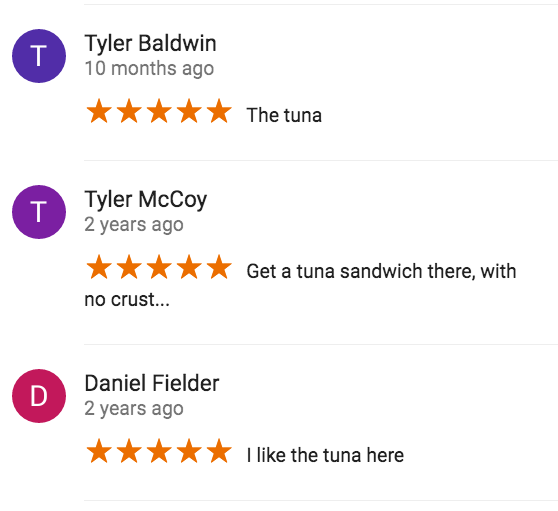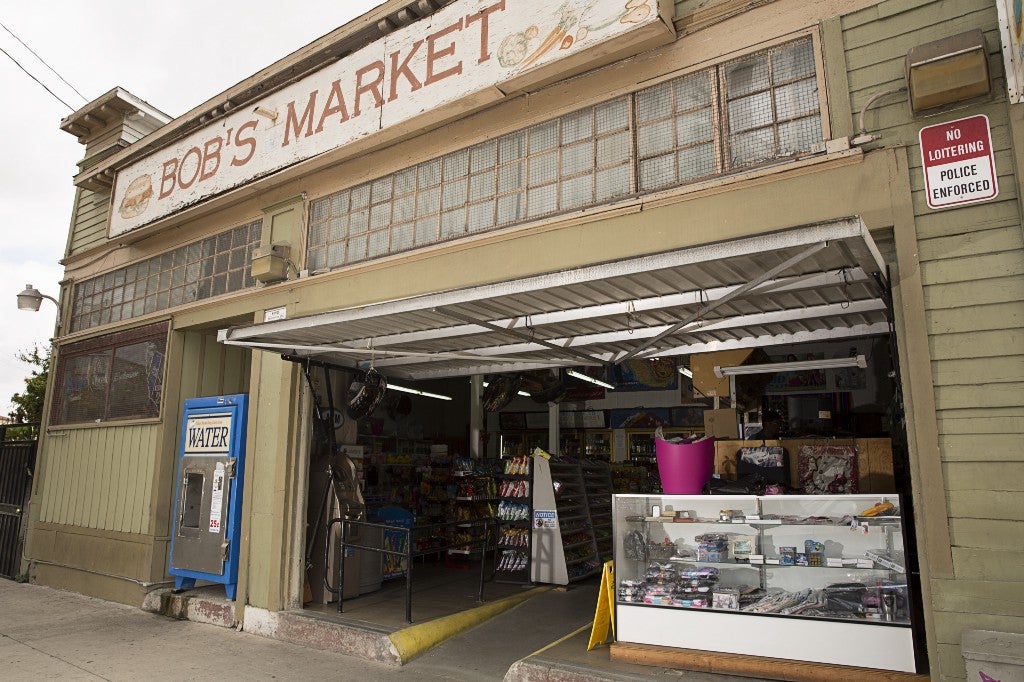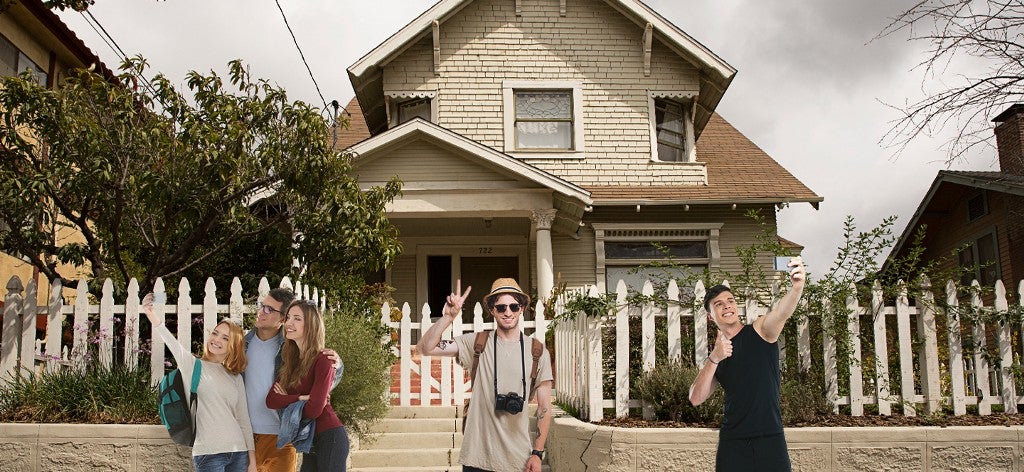In another era, my wife and I might’ve tried to get the scoop on Bob’s Market — the little store a block from our new house — from a neighbor. But in the year 2016, which was when we bought our place, we first checked the reviews on Google Places.
Lots of five-star reviews. Looked good. Everyone seemed to like the tuna.

Or did they? The more we read, the weirder the reviews seemed to get.

Bob’s Market is a typical urban corner store, with a huge rack of single-serving bags of chips and lots of canned and boxed food and household necessities, but no deli counter. It certainly didn’t seem like a place where you could buy a tuna sandwich, let alone a famous one.

A little Googling on “tuna no crust” revealed that they were reviewing a place that didn’t exist: Toretto’s Market, owned by Dom Toretto, played by Vin Diesel in the Fast and the Furious franchise. It’s the setting for the scene where we meet Dom in the first film in the series, a scene where Brian O’Conner (Paul Walker) orders a tuna sandwich and a fistfight breaks out.
Just a block northwest is the house where Toretto lives, which serves as the home base for the series’ assembled family of street-racers-turned-globetrotting-master-thieves. And as my wife and I settled into our new neighborhood, we noticed more and more people congregating in front of Bob’s or the Toretto house to take a selfie, or sitting in their cars just kind of looking out in awe. After 20 months of living in Los Angeles, I had finally ended up on a movie set.

Hollywood is a real place, too, but it’s also a metaphor, and the metaphorical version is harder to pin down. We moved to L.A. two years ago, at the beginning of our middle age, to see if I could translate my semi-successful career writing comedy online into TV or movies, something more lucrative. After a couple years of improv classes and writing groups, and a few feints at pilot writing, that goal feels only an inch or two closer.
When you get off the bus on Hollywood Boulevard, the automated system that calls out the names of the stops, which normally is pretty emotionally restrained, chirps “HOLLYWOOD!” in an exaggerated, optimistic tone, as if you’ve arrived in a world of glamorous movie magic. In reality, you’re more likely to step into a puddle of urine or accidentally get tangled in a line for a terrible nightclub frequented by the children of Russian oligarchs. The days of Hollywood screenwriters drinking and laughing it up in adjacent bungalows are over, as near as I can tell, if they ever existed in the first place. Most of the city’s aspirational content creation happens hunched over laptops in coffee shops, or, in my case, at home. I’m getting my writing out to people via email and web publishing, just like before. Like the Fast and the Furious familia, looking out from the south side of Dodger Stadium’s parking lot at the city skyline just out of reach, I had moved closer to my goal, but still wasn’t sure exactly how to get there.

If the internet keeps writers like me ever more solitary, it has revolutionized the world of fans tracking down where their favorite movies are filmed. A host of websites collate everything for you in neat alphabetical lists, in addition to the pages that specialize in individual films. Most people are content to browse the pictures from home, but a small trickle of them venture out, engaging in a game that used to require a tour bus, or at least a map to the stars’ homes you bought from some dude on a street corner.
Dom’s house. Two blocks away from mine, at 722 East Kensington Road, is a handsome two-story with a white wood frame structure. Angeleno Heights is the oldest section of Echo Park, just over the 101 from Downtown L.A. There are genuinely ornate Victorians here, and there are houses from the ’50s like ours, and there are the ones in between, like Dom’s. Unusually, the F&F movies filmed both the interior and exterior scenes in the same house, making the impulse to try to peek inside almost impossible to resist for hardcore fans. The only indication of trouble is a small but insistent sign hand-written in the yard of the wooden craftsman next door, urging you to “STAY OFF DRIVEWAY”; the driveway in question appears in the films to belong to Dom, but, in that way that real life is just a disorienting step removed from art, it’s really part of the neighboring property. I guess the lure of parking where so many awesome cars have parked before you is hard to deny.
For Corey Gray, a Kawasaki parts specialist visiting from Alaska and hanging out with friends who shared his “huge interest in cars,” the experience of seeing the house in person was immediately visceral. The visit was a surprise — his friends told him they were taking him to Rodeo Drive — but then he saw Bob’s Market: “I started to freak out, just saying, ‘No way, no way!’ until we pulled up to the house. It was so much better in person than in the film.”
Rodney Garcia, who lives in Riverside County, came down one afternoon with his girlfriend in his nicely detailed Honda, having read about some of the filming locations online. He was a little more relaxed — it wasn’t his first visit. “In the movies, this is just the place, you know?” he says. “It’s where they come back to, even if they don’t spend a lot of time there. I just like knowing it’s a real place, even if it’s not really real.”
But it is really real, kind of. The Fast and Furious characters call themselves a family, and so do the actors who play them, and they’re happy to include their fans in the love. A pilgrimage to the family home makes perfect sense — and seeing it as a real, physical place can leave them dwelling on other intersections between beloved fiction and reality. “Paul Walker is my favorite actor,” says Gray. “His passing really hurt me in a special kind of way.” And though the house was neither the scene of O’Connor’s “last ride” in Furious 7 (that would be Templin Highway) or his real-life death in 2013, “just being there made it feel all too real.”
Still, “it’s peaceful here,” Garcia tells me. Which it is — we’re only a block from Sunset Boulevard and less than a mile from Dodger Stadium, but, barring the occasional helicopter, it’s as quiet as any suburb. But it’s funny to hear someone say that who’s come to see the scene of a deadly drive-by shooting in the first film and various dramas since. In the most recent installment in the series, Jason Statham blows the entire house up by remote control. Maybe some of the appeal of visiting is just seeing that the house is still there.
The web sites that guide you to various filming locations often have a charming early ’00s, Web 1.0 aesthetic to them. Once people like Rodney actually get here, though, their photos go straight on social media. And 722 East Kensington Road has perhaps one of the greatest honors our age can bestow: its own heavily used Instagram location tag, which I discovered as an option when I tried to upload a picture of my cat that I had taken in my home office. Now I’ll confess that I’ve only seen the very first movie in the series. But I still got a thrill seeing that phrase pop up on my phone. Maybe this is the 2016 equivalent of some studio-era hack looking up hopefully at the Hollywoodland sign: a writer, me, earnestly typing into Final Draft, knowing I’m in Dominic Toretto’s house’s ghostly internet penumbra. Seems like there’s something magical to work with here.

If Dom’s house is the main attraction for visitors to the neighborhood, Bob’s, the IRL version of Toretto’s Market, is where the afterparty happens. John Hong bought the store from his brother two years ago, and said he didn’t realize the connection — at first. That quickly changed.

“Every day, they come,” he says. “Every day! They stand outside, they take pictures.” When I asked him how people track down the store down, he gestures vaguely in the air. “That internet,” he says. “It’s all on that internet.”
Hong rents out the store as a filming location occasionally — it’s a distinctive building and a historic landmark. He also has a series of production stills hanging up over the counter, showing its transformation into various permutations of itself to fit the needs of different storytellers. Hong seemed particularly amused by a beer ad in which a silver-painted man wearing a top hat had plopped a 12-pack onto his counter.
But he knows what the real draw is. Several times day, he gets to watch a gaggle of fans laugh with the shock of seeing something they only knew from fiction they love, suddenly physical and real, right in front of them. It’s good business, too: they always buy something, a bag of chips or maybe some soda or a lottery card.
Do they try to buy tuna sandwiches? I ask him.
He laughs. “Always. Always with the tuna.”
